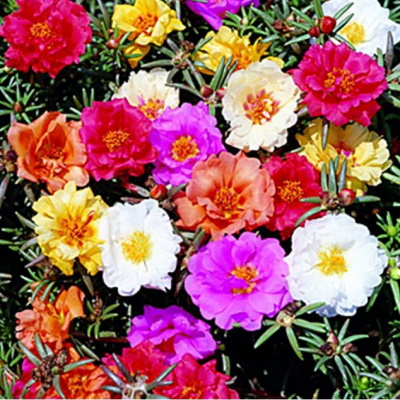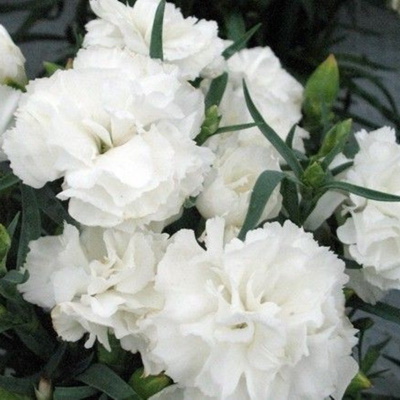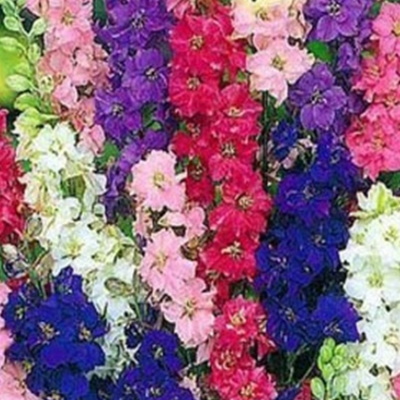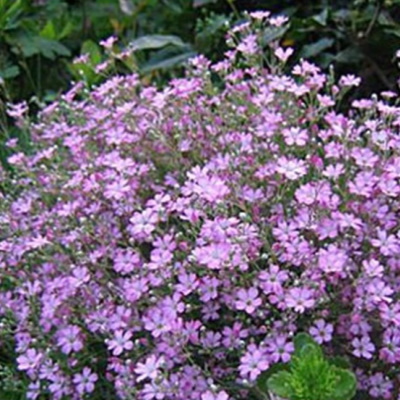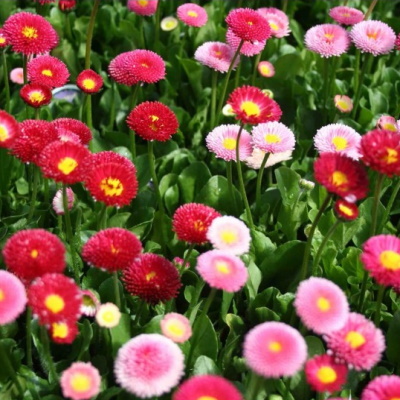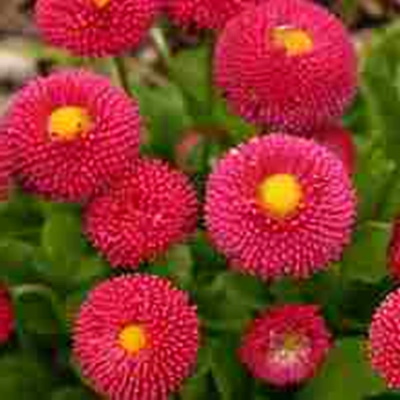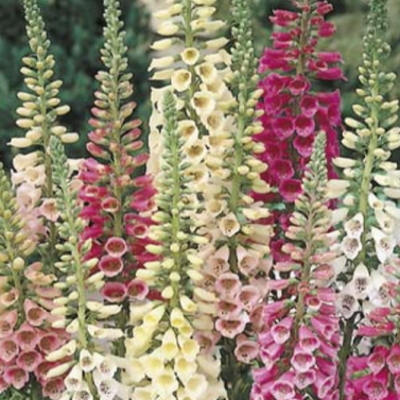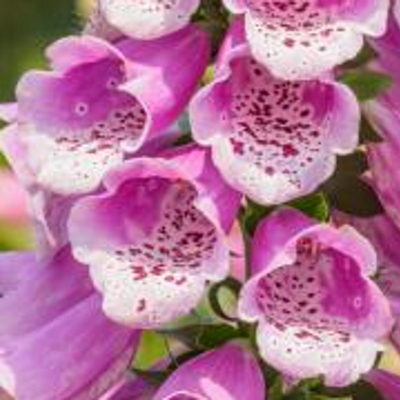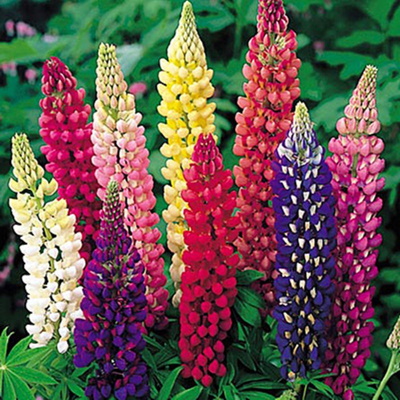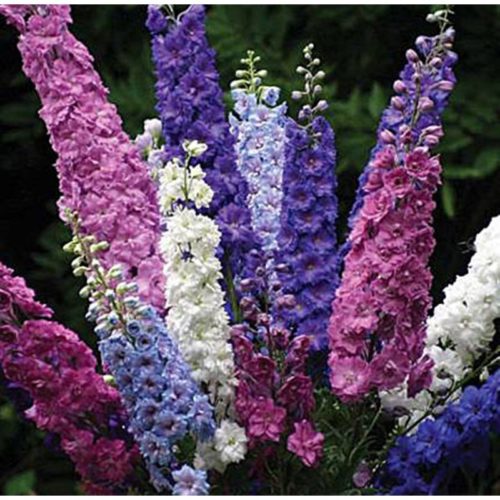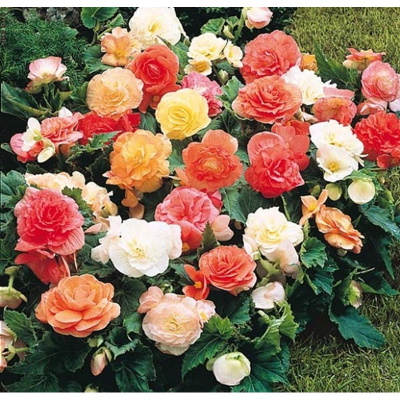-
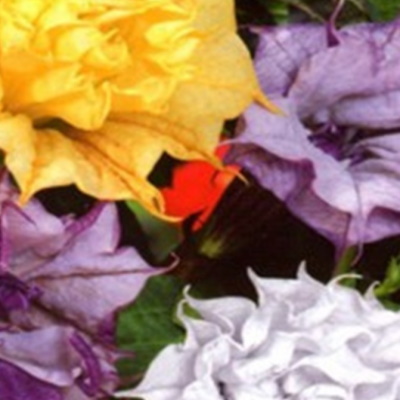 Very ornamental perennial is mostly grown as annual. Grows up to 150cm (60in.) tall, woody stem with large leaves. Fruit - a spherical capsule, covered with spines. Datura flowers are light blue, funnel-shaped, very fragrant, with white rim, up to 20cm (8in.). All parts of Datura plants contain tropane alkaloids (highly poisonous) and may be fatal if ingested by humans or other animals, including livestock and pets.
Very ornamental perennial is mostly grown as annual. Grows up to 150cm (60in.) tall, woody stem with large leaves. Fruit - a spherical capsule, covered with spines. Datura flowers are light blue, funnel-shaped, very fragrant, with white rim, up to 20cm (8in.). All parts of Datura plants contain tropane alkaloids (highly poisonous) and may be fatal if ingested by humans or other animals, including livestock and pets. -
Out of stock
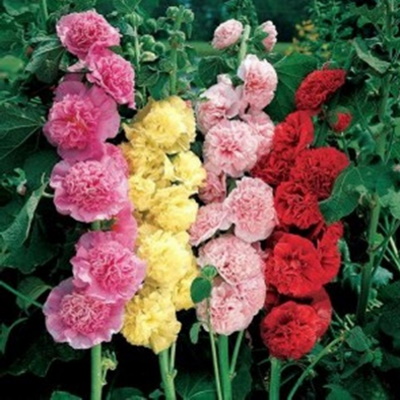 Beautiful perennial flowering plant height 1.5-2.5 meters The flowers are double, large, diameter 8-12 cm, pink, yellow, light pink, and red colour. Grown by sowing seeds in open ground in May-June or September. Blooms second year, starting in July.
Beautiful perennial flowering plant height 1.5-2.5 meters The flowers are double, large, diameter 8-12 cm, pink, yellow, light pink, and red colour. Grown by sowing seeds in open ground in May-June or September. Blooms second year, starting in July. -
-
Out of stock
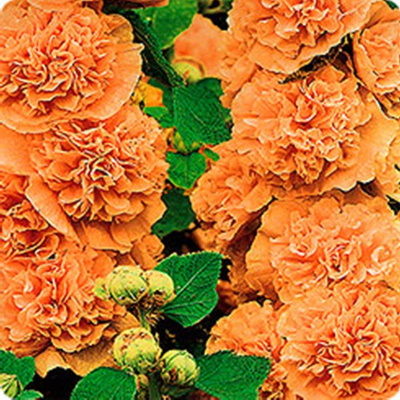 Beautiful perennial flowering plant grows 150-250 cm tall. Large, double, peach flowers, diameter 8-12 cm. Sow directly in May-June or September. Blooms in the second year from July. Use for group plantings, fences, and cuttings.
Beautiful perennial flowering plant grows 150-250 cm tall. Large, double, peach flowers, diameter 8-12 cm. Sow directly in May-June or September. Blooms in the second year from July. Use for group plantings, fences, and cuttings. -
Out of stock
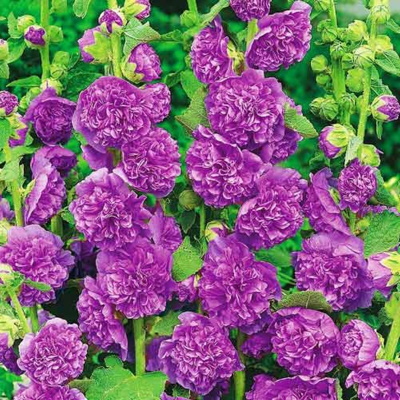 Beautiful perennial flowering plant grows 150-250 cm tall. Large, double, purple flowers, diameter 8-12 cm. Sow directly in May-June or September. Blooms in the second year from July. Use for group plantings, fences, and cuttings.
Beautiful perennial flowering plant grows 150-250 cm tall. Large, double, purple flowers, diameter 8-12 cm. Sow directly in May-June or September. Blooms in the second year from July. Use for group plantings, fences, and cuttings. -
-
Out of stock
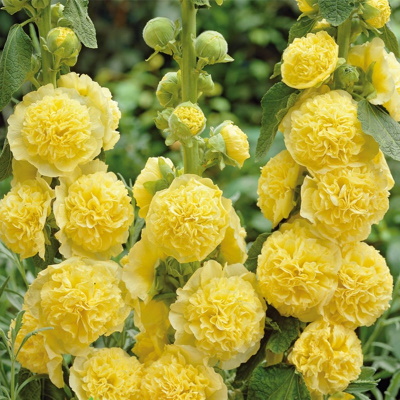 Perennial, grows 150-250cm tall. Large, yellow, double flowers collected in giant inflorescences. Blooms in the second year from July. Use for group plantings, borders, and cutting.
Perennial, grows 150-250cm tall. Large, yellow, double flowers collected in giant inflorescences. Blooms in the second year from July. Use for group plantings, borders, and cutting. -
 One of the latest blooming wildflowers in the Northwest. Rising up to 3 or 4 feet in height with purple/blue/white flowers, this hardy plant adapts to an incredible range of conditions. We find it on windswept and salt-sprayed coastal bluffs, in damp forest clearings along pristine trout streams, and growing out of pavement cracks in the economy parking lot of the airport. In our experience, about the only thing this adaptable plant doesn't stand up to is constant rabbit browsing.
One of the latest blooming wildflowers in the Northwest. Rising up to 3 or 4 feet in height with purple/blue/white flowers, this hardy plant adapts to an incredible range of conditions. We find it on windswept and salt-sprayed coastal bluffs, in damp forest clearings along pristine trout streams, and growing out of pavement cracks in the economy parking lot of the airport. In our experience, about the only thing this adaptable plant doesn't stand up to is constant rabbit browsing. -
-
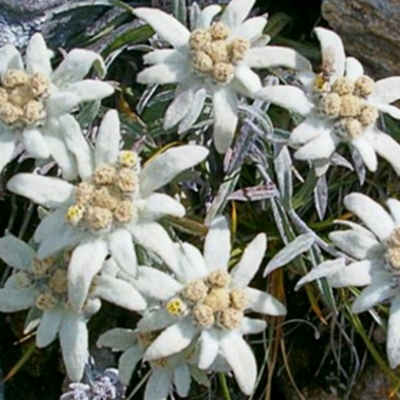 Edelweiss Leontopodium Alpinum is a famous, short-lived, herbaceous perennial native to alpine areas of Europe. Edelweiss seeds can be sown indoors 4-6 weeks before the last frost, so seedlings can be transplanted outdoors after the last frost. So-called Edelweiss of the Alps is a clamping, woolly perennial wildflower with highly attractive gray-green foliage and small yellow flowers that seat on a top of showy, fluffy, white-woolly, bract-like leaves, and this highly attractive combination is shaped like a lion's paw. Edelweiss starts to bloom in the summer. The established Edelweiss likes to grow in full sun, and cool summer climates are preferable environments.
Edelweiss Leontopodium Alpinum is a famous, short-lived, herbaceous perennial native to alpine areas of Europe. Edelweiss seeds can be sown indoors 4-6 weeks before the last frost, so seedlings can be transplanted outdoors after the last frost. So-called Edelweiss of the Alps is a clamping, woolly perennial wildflower with highly attractive gray-green foliage and small yellow flowers that seat on a top of showy, fluffy, white-woolly, bract-like leaves, and this highly attractive combination is shaped like a lion's paw. Edelweiss starts to bloom in the summer. The established Edelweiss likes to grow in full sun, and cool summer climates are preferable environments. -
-
-
-

Clematis-flowered columbine. Fluffy, star-shaped blooms with pointed, overlapping petals resemble petite clematis flowers. Fully double 3-4 cm upward-facing and nodding, spurless flowers. Blooms late spring of the second year from a spring sowing. An excellent cut flower, it has strong, straight stems and fills the gap between early spring and summer bouquets. Produces multiple blooms per stem. The mix includes Victorian shades in a complementary color palette: rose, almost black, violet, deep wine red, dark purple, white, and purple-edged white. Attracts hummingbirds.
-
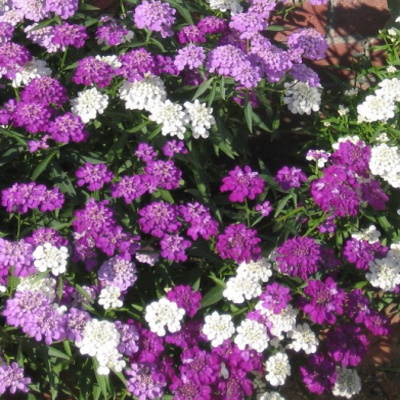 One of the first messengers of heat in the spring garden . This perennial forms a dense lush shrub, height of about 30 cm, grows abundantly so that the diameter of the bush can reach 1 meter. White flowers with a diameter of about 1.5 cm Despite the small size of their flowers the quantity is large : one plant can simultaneously develop thousand blooming flowers blooming so it is like a white cloud and the green leaves almost invisible.
One of the first messengers of heat in the spring garden . This perennial forms a dense lush shrub, height of about 30 cm, grows abundantly so that the diameter of the bush can reach 1 meter. White flowers with a diameter of about 1.5 cm Despite the small size of their flowers the quantity is large : one plant can simultaneously develop thousand blooming flowers blooming so it is like a white cloud and the green leaves almost invisible. -
-
-
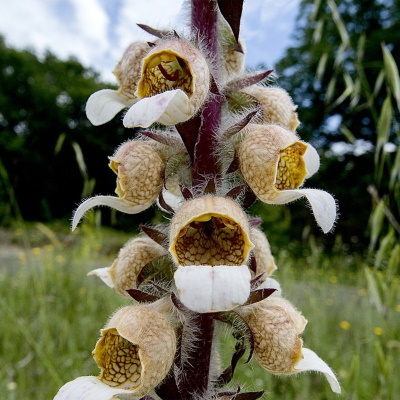 Perennial flowering plant grows to a high of 60-70 cm and produces many stems that are suitable for cut flowers. Produces woolly spikes, often reddish-purple. Mid-green, lance-shaped leaves sometimes have white woolly hairs on the leaf veins. Caution: The whole foxglove plant is toxic; no part is edible.
Perennial flowering plant grows to a high of 60-70 cm and produces many stems that are suitable for cut flowers. Produces woolly spikes, often reddish-purple. Mid-green, lance-shaped leaves sometimes have white woolly hairs on the leaf veins. Caution: The whole foxglove plant is toxic; no part is edible. -
-
-
-
 Aubrieta (Aubrieta deltoidea) is one of the earliest bloomers in spring. Often part of a rock garden, Aubretia is also known as "false rockcress". With its darling little purple flowers and dainty leaves, Aubrieta will scramble over rocks and other inorganic items, covering them with color and distracting the eye. Aubrieta groundcover is also remarkably drought tolerant once established and can handle the harsh heat of a full sun rockery. Read on for some tips on the care of Aubrieta and how to use this magical little plant in the garden.
Aubrieta (Aubrieta deltoidea) is one of the earliest bloomers in spring. Often part of a rock garden, Aubretia is also known as "false rockcress". With its darling little purple flowers and dainty leaves, Aubrieta will scramble over rocks and other inorganic items, covering them with color and distracting the eye. Aubrieta groundcover is also remarkably drought tolerant once established and can handle the harsh heat of a full sun rockery. Read on for some tips on the care of Aubrieta and how to use this magical little plant in the garden. -
Out of stock
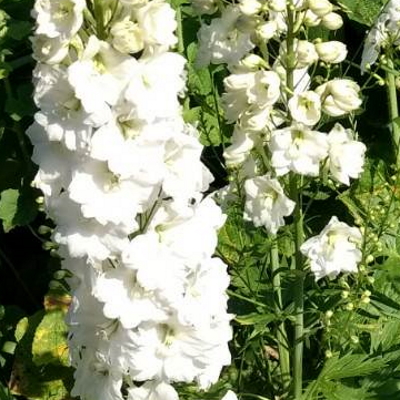
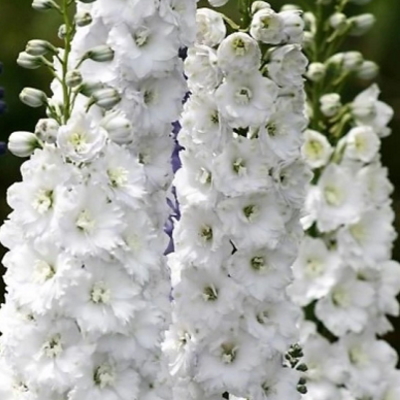 An F1 hybrid breeding breakthrough. Excellent bloom production during short days for cut flowers. GREENHOUSE: Sow in Jan. or early Feb. Freeze seed for 24 hrs. just before sowing, to break dormancy. Use Jiffy Mix or fine sand for a growing medium. Germinate in cool soil at 54°F/12°C for 20 days, according to color (best colors are smallest seedlings). High temp. will prevent germ. Grow seedlings cool, at 60°F/16°C days and 50°F/10°C nights. DIRECT SOWING: Sow outside in late August in cool soil. Freeze seed 24 hours before sowing. Do not pinch the flower heads. For improved blossoms, add lime to the soil each year.
An F1 hybrid breeding breakthrough. Excellent bloom production during short days for cut flowers. GREENHOUSE: Sow in Jan. or early Feb. Freeze seed for 24 hrs. just before sowing, to break dormancy. Use Jiffy Mix or fine sand for a growing medium. Germinate in cool soil at 54°F/12°C for 20 days, according to color (best colors are smallest seedlings). High temp. will prevent germ. Grow seedlings cool, at 60°F/16°C days and 50°F/10°C nights. DIRECT SOWING: Sow outside in late August in cool soil. Freeze seed 24 hours before sowing. Do not pinch the flower heads. For improved blossoms, add lime to the soil each year. -
Out of stock
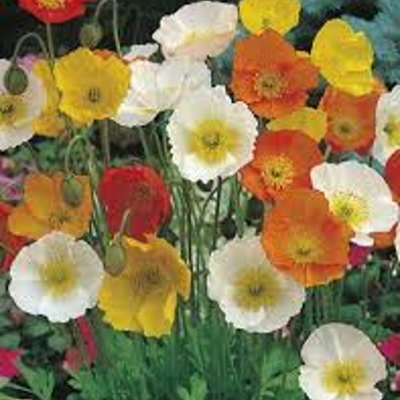 Papaver nudicaule. The Iceland Poppy is a hardy short-lived perennial. It self sows easily so will last for years to come. The cup-shaped blooms have a texture like crepe paper and appear in a range of subdued pastel colours; apricot, gold, tangerine, and white. Sow Iceland Poppy seeds in early spring or late fall where they are to grow permanently. The flower stalks grow to around 30cm tall and are among the longest-lasting poppies as cut flowers. Use a candlestick to seal the cut stem to prolong them as cut flowers. They are highly attractive to bees. Plant in late fall or early spring. Poppy seeds need to be cold stratified to germinate. Poppies only need soil that is ordinary and moist, but well-drained. The seeds should not be planted deeply; they just need to be compressed into the soil, as they need light to germinate. The best method for planting is to mix one part seed with 5 parts sand and scatter over the prepared growing area.
Papaver nudicaule. The Iceland Poppy is a hardy short-lived perennial. It self sows easily so will last for years to come. The cup-shaped blooms have a texture like crepe paper and appear in a range of subdued pastel colours; apricot, gold, tangerine, and white. Sow Iceland Poppy seeds in early spring or late fall where they are to grow permanently. The flower stalks grow to around 30cm tall and are among the longest-lasting poppies as cut flowers. Use a candlestick to seal the cut stem to prolong them as cut flowers. They are highly attractive to bees. Plant in late fall or early spring. Poppy seeds need to be cold stratified to germinate. Poppies only need soil that is ordinary and moist, but well-drained. The seeds should not be planted deeply; they just need to be compressed into the soil, as they need light to germinate. The best method for planting is to mix one part seed with 5 parts sand and scatter over the prepared growing area.
